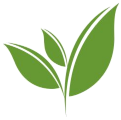What is Kombucha
Around the world, people have been drinking fermented tea for many hundreds of years, calling it by various names and praising its probiotic benefits as well as its refreshing flavour. Kombucha is an ancient fermented tonic made from sweetened tea. Once cultured, this effervescent beverage contains a host of beneficial bacteria, yeasts, and acids imparted to it by its mother culture, often referred to as a SCOBY.
Kombucha has a long history of consumption in Asia and Europe but in recent years it has gone somewhat mainstream. Many consume kombucha now for the many health and probiotic benefits it is touted for. Others simply enjoy the tangy, fizzy flavour of this fermented beverage.
So, what transforms plain, sweet tea into an effervescent, probiotic drink? The process of making kombucha all begins with a SCOBY. A kombucha SCOBY is one of five ingredients that go into brewing kombucha tea. SCOBY stands for Symbiotic Colony Of Bacteria and Yeast. “Symbiotic” means that the bacteria and yeast strains live together in a complex, mutually supportive community, supporting and depending on each other.
You may hear a SCOBY referred to as a mushroom because it resembles the smooth, thick body of a mushroom. The pancake-shaped disk is somewhat slimy and gelatinous in feeling. (Some might even say it resembles raw chicken.) Not all kombucha SCOBYs contain the exact same strains of bacteria and yeast, but they generally all act in a similar way to create kombucha tea.
One thing all kombucha SCOBYs have in common is that they are a self-perpetuating culture. This means the SCOBY multiplies itself through the process of creating kombucha.
